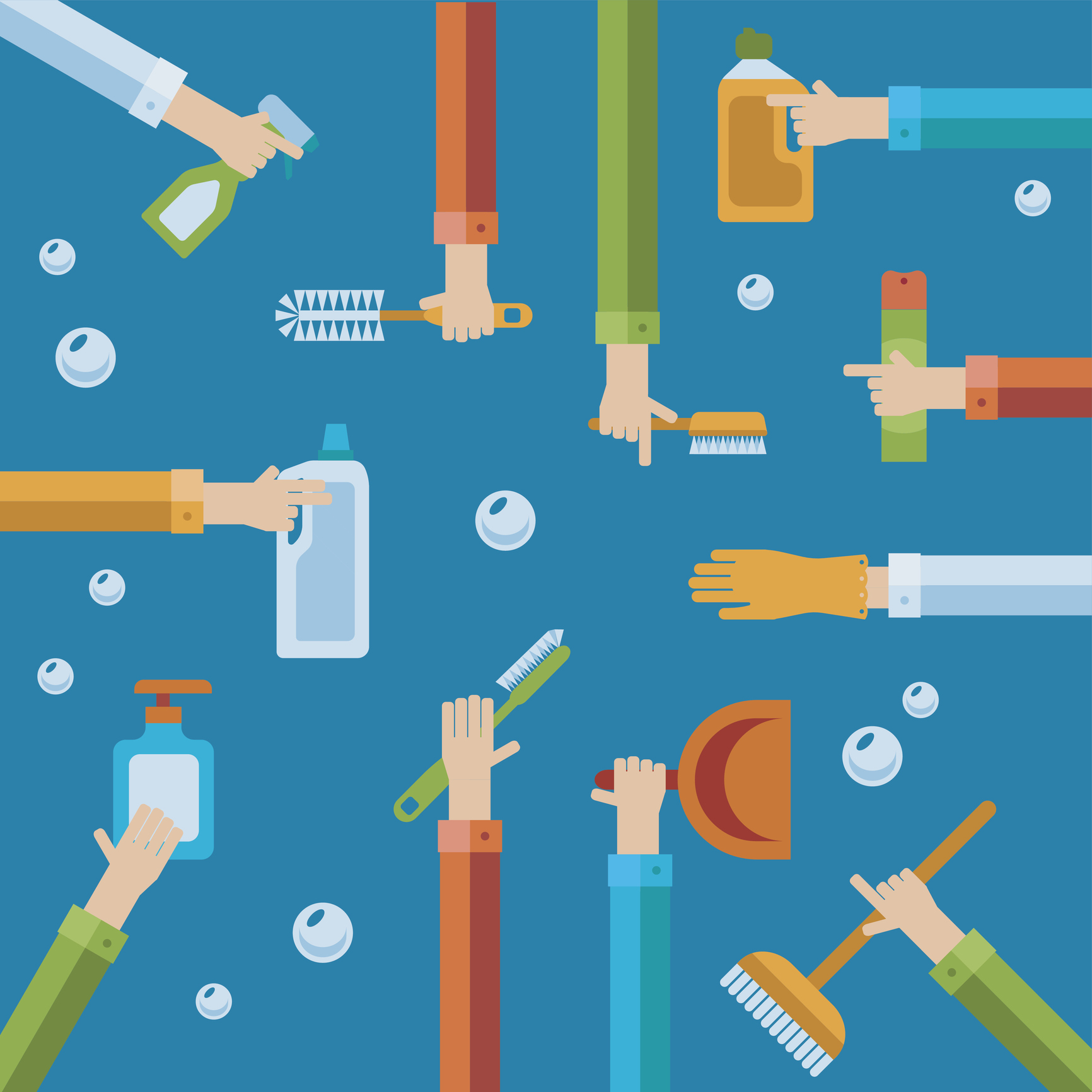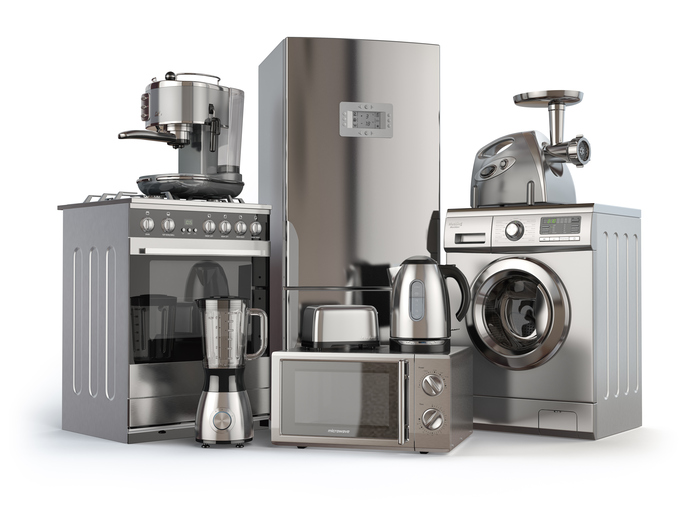Remove Rust from Metal
To remove rust from metal, make a paste of ¼ cup salt and 1 tablespoon of lemon juice, scrub, rinse, and buff dry.
Baking Soda to Clean Sink Drain
To clear a slow drain, pour 1 cup of baking soda down the drain. Slowly add 1 cup of white vinegar. Cover with a stopper, let the mixture fix for five minutes and flush with a gallon of hot water. Also works well for cleaning scorched pots or removing baked on foods from oven-safe dishes.
Cleaning Blenders
Fill your blender with warm water, 1/4 cup of vinegar and a few drops of lemon juice. Turn on blender for about 15 seconds. Rinse and let dry.
Removing Stains from Utensils
- Clean rust from knives by leaving the blades stuck to a raw onion. Wiggle the blade around to activate the juice.
- To remove tea stains from mugs and cups, rub with a paper towel and add a little salt or baking soda.
- Pans are easier to clean if you soak them immediately in cold water with a drop of dishwashing liquid.
- Keep a stainless-stell hood shiny and streak free with spray lubricant or baby oil. Wipe clean with paper towels.
Natural Cleaning & Care
- Clean out the sink with a solution of 25g of table salt and 1 cup water. Salt is a disinfectant and natural abrasive.
- A cut lemon removes tea and coffee stains.
- Make a cleaning paste by combining 4 tablespoons of baking sode with 4 tablespoons of water. Use a soft cloth and rub the paste onto the surface to be cleaned. Wipe off with a clean cloth and buff to a shine.
- Recipe for an all-purpose surface cleaner. Removes grease and dirt, smells beautifully and it is cheap and nontoxic and will keep indefinitely. Use it on stainless-steel stinks and draining boards, tiled and wooden surfaces, and plastic finishes.
- 500 ml white vinegar
- 1 cup (250 ml) water
- 20-30 drops eucalyptus oil
- To clean and deodorize your microwave, mix 125 ml of water with 2 tsps of baking soda over the dirty surfaces and rub clean with a damp cloth.
- Washing machine - run it empty on a hot wash with 60 ml vinegar in the detergent drawer. Do this every 20 washes.
Ironing Tablecloths
- Round or oval Carefully lay the tablecloth across the ironing board and press the center area of the tablcloth. Working outward, iron the edges one section at a time. THink of the tablecloth as a large pie and iron in pie-slices.
- Rectangular Iron wrong side first. To erase a center crease, fold the tablecloth loosely into thirds and iron down the middle.
Textured Ceilings
Clean using a lint roller on a paint brush.
Easy Grease Removal
Fill pan halfway with water, add about a tablespoon of baking soda, and bring to a boil. Then remove the pan from the heat and drop in a tablespoon of liquid dish soap. Allow the solution to cool, then pour it out. The grease should go with it.
Remove Garlic and Onion Smell
To remove the smell from a wood cutting board, sprinkle the surface with baking soda and rub with damp sponge or cloth to remove odor.
Sink Spruce Up
After cleaning your kitchen and bathroom sink, put some baby oil on a soft, dry cloth and smooth it over faucets and knobs. Gently buff with a second cloth until they're clean and shiny. Baby oil temporarily seals in the shine, making it easy to remove new water spots.
Cleaning Microwave
Fill a bowl with a cup of water and juice of one lemon. Microwave on high for 3-4 minutes or until the water comes to a full boil and creates steam. Leave closed for several minutes. Then clean with a cloth and hot soapy water. Wipe with a clean cloth and leave the door open until it drys.
Cleaning Washing Machine
Set the full cycle, hot water wash and add a cup of oxygen bleach. Run the rinse cycle with clear water.
Cleaning Screens
First lay four 2x4s on the ground to create a frame. Staple a sheet of plastic over it to make a homemade "tub". Fill it with warm soapy water, and use a soft scrub brush to gently clean both sides of each screen. Rinse screens with a hose and allow to dry.
Cleaning Air Conditioners
Get your central air conditioning system ready for summer by cleaning the condensation drain line. This small plastic pipe running from your AC unit outside is a magnet for algae and other gunk. To keep it from clogging, pour a cup of bleach through a funnel into the drain line's access hole (near the air handler unit inside your house), let it site for 20 minutes, then flush the pipe with water.
Vases
Use denture cleaner and warm water (one per cup). Let sit, then rinse.
Babyfood
Food stains are the worst (bananas, blueberries, anything tomato based). I spray everything with Shout and then add a cup of Oxyclean to the laundry.
I recommend buying a BIG box of Oxyclean.It gets out the wildest baby stains.
Bath Toys
Do you need to wash them? Probably yes. You can soak them in a sink (or bathtub) full of hot water and vinegar for about 10 minutes. Then scrub anything that still feels scummy.
Faster Rinsing
Use a spray bottle containing clean water to rinse off the places you have washed. It is easier than rinsing out your cloth/sponge and prevents the formation of a soapy film on the surface.
Homemade Cleaning Solutions
Option One
- 4 liters warm water
- 1 tsp liquid soap
- 1 tsp borax
- 1/4 cup undiluted white vinegar
Option Two (store in an airtight container
- 2 heaping tablespoons baking soda
- 1 tablespoon vinegar
Scouring Cleanser (store in spray bottle)
- 1 tsp borax
- 2 tblsp vinegar
- 2 cups hot water
Toilet Cleaner
Combine 1 cup borax and 1/4 cup vinegar (or lemon juice). Mix. Pour into toilet and leave for a few hours (or overnight). Scrub.
Cleaning Stainless Steel
Conventional wisdom holds that pots and pans should be given a good soak. But every metal has different properties and requires special care. Stainless steel is prone to stains from heat and hard water. To remove them, apply white vinegar with a soft cloth and rub. Always dry thoroughly after washing to prevent a film from forming. Never soak stainless steel cookware; this will result in pitted surfaces.
Wood Ash
- Hides stains on paving by sprinkling on paint splatters.
- Repels slugs and snails
- Melts ice without harming soil or concrete
- Controls pond algae. One tablespoon per 1000 gallons adds enough potassium to strengthen the aquatic plants to complete with the algae
- Clean fireplace doors. A damp sponge dipped in ashes scrubs away sooty residue.
To stop milk from overflowing during heating, simply put a metal teaspoon or a saucer at the bottom of the pan.
Rub Down
To remove oil or latex paint from sensitive skin, rub with vegetable shortening, wait a few minutes and wipe off.
Prevent Paint on Mirrors
To avoid paint stains on mirrors or windows, rub the cut side of an onion across the entire surface of the glass. The onion prevents the paint from sticking.
Sandpaper System
Store your sandpaper in an expandable folder. Put the grit numbers on the labels and sort your messy pile of sandpaper.
Vacuum Fix
Here's a quick solution for the next time the vacuum cleaner has something stuck like hair or string. Remove the offending object with a seam ripper, which will cut easily through knots and tangles.
Painting Tip
Slide a rubber band over the open paint can. Use it to gently wipe the bottom of the brush against the band each time you dip.
- Slice cake in half horizontally
- tie up plants
- mend umbrella
- bind roast chicken - use unflavoured and unwaxed
- photocopy music and use as gift wrap
- spirograph designs - 11x17 paper
- Compartmentalized canvas organizer - great for sunglasses, keys
- Group photographs - in framed and matted in complementary materials to make a tight cluster (no more than 2 inches apart)
- nonstick measuring - run spoons and cups under hot water to keep ingredients from sticking (ex syrups and oils)
- Hand-held graters - squeeze citrus fruits over a hand-held grater to keep seeds and flush out of juice
- Adhesive stickers - few drops of cooking oil (and dab of toothpaste will remove stickers from purchases. Rub with soft cloth and rinse).
- Keypad organizer - tray under keyboard (?)
- Glue a metal ruler to your bulletin board then add a magnetized storage bin.
Cleaning with Cream of Tartar
1. Stainless steel surfaces
2. Aluminum pans
3. Copper pots
4. Brass candlesticks
5. Scratched dishes
6. Stained kitchen linens
7. Rusty kitchen tools
Just to let you know, this page was last updated Monday, Jan 19 26

